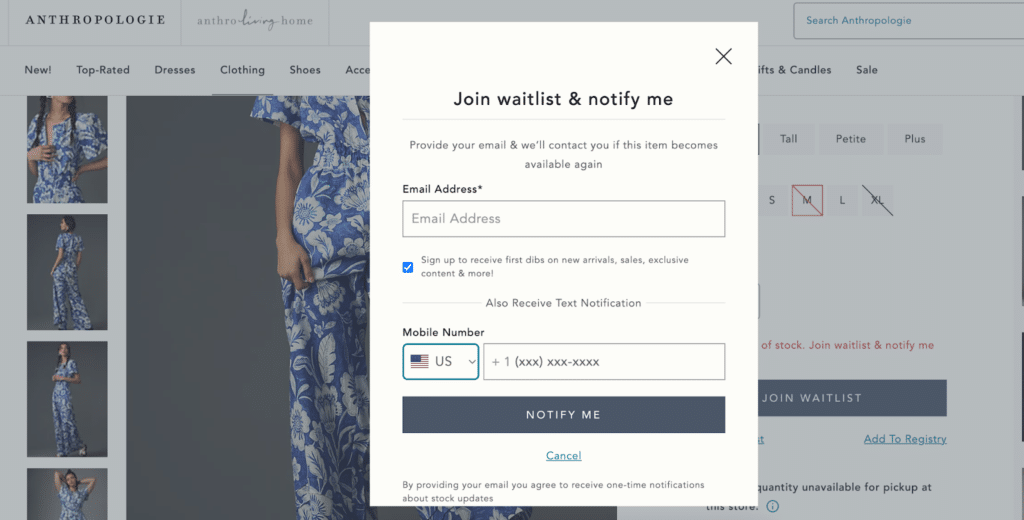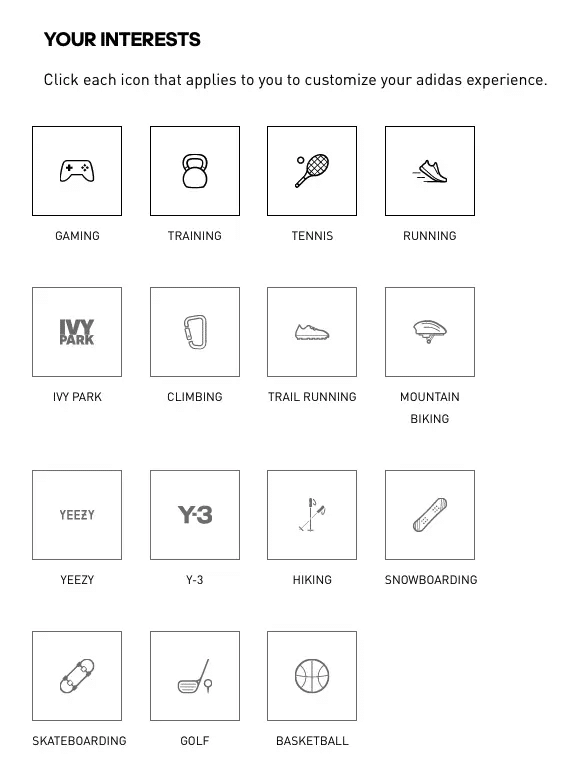How to Collect Zero-Party Data Through Email
The era of third-party cookie tracking is over.
In the before times, marketers could access data about their customers’ travels around the Internet, picking up important information about their browsing habits and other purchases. You could easily manage advertising retargeting efforts or trigger the right kind of emails based on the data you’ve collected.
Sigh. It’s not so easy anymore. Enter: The post-cookie era.
The email data privacy landscape is ever-evolving
It all started with Google’s plan to end third-party cookies by 2024 remains a key element of its Privacy Sandbox. We’ve known about this change since January 2020, when it was first announced… but it’s still a punch in the gut. An Epsilon study of US marketers found that 69% said the elimination of third-party cookies will have an even greater impact than GDPR and CCPA on their marketing efforts. 🤯
As Google goes, so does the rest of the market. It wasn’t long after that Apple launched Mail Privacy Protection, which hides subscribers’ IP addresses… aka making it impossible to tell who opened your emails, if they’re using Apple Mail.
What’s a data-driven email marketer to do?
There’s a lot of uncertainty about the future of data privacy and what it will mean for email marketers. But we know that change will come—and the dust will eventually settle. We marketers will find ourselves challenged to think and do differently.
What is zero-party, first-party, second-party, and third-party data?
This is the time to think more holistically about your data landscape—what you collect, where you collect it, and how you use it. You can access four types of data to build your email campaigns:
1. Zero-party data
Zero-party data is explicitly given to you by your audience, through conversations via email, chat, or through forms and surveys. You’re already collecting a lot of this data already: Names, addresses, and demographic information, for example. Anytime you’re asking your subscribers a question and they answer it, it’s zero-party data.
2. First-party data
First-party data is the individual-level data collected from your audience, on your own channels. You have access to more information about your customers and prospects than you think, from behavioral tracking on your website, social media engagement, content performance, or intel from sales or analyst teams. This is all considered first-party data.
3. Second-party data
Second-party data is data one company purchases from another. Second-party data helps you understand consumer trends, analyze the competitive landscape, or conduct research. Basically, it’s someone else’s first-party data that you’re pulling into your universe.
Second-party data gives you scale. It’s best used to enrich your database and learn more about your audience’s tastes and preferences. Think data integrations from your partners or industry players—an example would be incorporating customer feedback from sites like Google or Tripadvisor into your database.
One final note on second-party data: We know it’s soooo tempting, but whatever you do, don’t buy an email list. That’s a great way to ruin your deliverability and your brand reputation in one go.)
4. Third-party data
You already know about third-party data, which comes from tracking browsing activity, purchases, social networks, media mentions, and more. Aggregating this data allows you to build a comprehensive profile of your ideal customer and where you can find them around the Internet when they’re not browsing with you. While third-party data isn’t going away forever, it’s going to be much more challenging to use and collect in the future.
Why zero-party data matters the most in email
Of the four kinds of media data available, it’s zero-party data that’s going to matter the most for your email marketing efforts in the future. That’s because…
You own your audience
Zero-party data puts the emphasis back on self-reporting and how critical it is. Your prospect or customer inherently gives you permission to know more about them. Every time they say “yes” to providing their zero-party data, they are saying “yes” to a continuance of their relationship with you.
That consent is incredibly powerful–as is the responsibility that comes with it. Consumers expect that the business they trust with their information will use it effectively. As privacy restrictions become even more of an issue in coming years–which will absolutely happen–the emphasis will be on having your own data.
With this data, you can:
Create personalized experiences
We as marketers may be driven to build zero-party data because of privacy changes–but the audience shares zero-party data for their advantage. 71% of consumers expect companies to deliver personalized experiences, according to McKinsey.
More than once, I’ve put things in an online shopping cart hoping someone will remind me what I forgot in an email–or might send me a discount! At this point, if you’re not delivering a personalized experience, you’re at a major disadvantage. Zero-party data can help you do it.
Cut through the noise
You can’t blast your audience with one message and hope that some of them convert. According to our 2021 State of Email report, 71% of consumers expressed frustration with impersonal experiences.
Your subscribers’ inboxes are more crowded than ever. With the end of third-party cookies, it’s your chance to build 1:1 relationships with your subscribers and make them feel seen. You may have less information about their Internet wanderings, but if you make an effort to talk to them—ask them what kinds of messages they want to see, what they’re interested in, and how they prefer to interact with you—you won’t be like every other email that lands in their inbox.
Boost ROI
The more you create personalized, relevant experiences for your subscribers through email, the more you’ll see a return on your investment. That same McKinsey report found that companies that grow faster drive 40% more of their revenue from personalization when compared to their slower-growth counterparts.
Email is still one of the best channels for ROI, with a whopping $36 return for every $1 spent. That number can go even higher if you sift through your zero-party and first-party data for the gems that make your experience that much better.
Imagine that you’re out at dinner and you spill something on your favorite shirt. We all have that friend that will swoop in with a stain remover/spare shirt/well-placed accessory just when you need it. Be the email marketing equivalent of that friend.
How email overcomes typical data challenges
With third-party data gone, it’s time to focus on what you can control: Your zero-party and first-party data.
You can gather first-party data through user interactions on your website, app, community, or physical store. This type of data is invaluable as you build personalized experiences for your subscribers. But it has one major drawback: it’s limited in what you can collect.
Enter: Zero-party data.
Email can get around those limitations by giving you the chance to start a conversation directly with your subscribers to collect zero-party data instead. Here’s what to keep in mind before you ask your subscribers a single question:
1. Consider what data you have—and what you still need
The zero-party data you capture by way of your email marketing is the most important source of truth you’ll find; it came right from the horse’s mouth with their permission and encouragement. But before you ask them for more, think about what first-party data you’ve already been collecting in the background. Your email subscribers are probably engaging in your app, social media, on your website or in a physical store or place of business, too.
Looking at engagement across multiple platforms will give your big picture data view. Through that lens, you can take stock of what information you currently have–and what you still need to know.
2. Identify what data points to prioritize
You and your subscribers get the most value out of zero-party and first-party data when you take the time to prioritize what you really need to know. (And anticipate that it’s subject to change at any given time!)
Start by identifying what data points you want, based on the biggest strategic impact. If you’re a retailer and knowing your customer’s birthday is a key part of your promotional strategy, focus on how you can collect that data for as many customers as possible.
If you’re a B2B brand and a person’s role and company size will determine how you present your solutions, collecting that information should be your top priority.
Only ask subscribers for as much information as they can stomach at one time–and make sure you know how you’ll use it to provide value on the back end.
3. Keep your data collection gentle
You’re playing the long game when you’re building zero-party data–but it shouldn’t feel that way to your customers. Tools like progressive forms meet the customer where they are without burdening them. These essentially swap out fields of information you already have about a person from a past visit, with a new field that asks the next best thing.
When you have their attention, don’t forget to borrow from the age-old “while I have you” tactic. For example, “you’ve told us you love summer dresses–do you like to wear heels, sandals or tennis shoes the most in the summer?”
4. Hierarchically set data priorities based on your current database
Building zero-party data with email can present a “chicken or the egg” conundrum. Do you start with strategy–or collection of the data? Both need to be tightly aligned so you don’t have endless data points that aren’t complete.
Start by considering how your audiences differ–both in what they value and how they may respond. Then decide how that will play into your zero-party data collection strategy.
At Litmus, we serve both B2C and B2B audiences. We know they are very different business models, and that our data approach can and should change based on how they identify. When you collect data, make sure you put it to use. Your subscribers know that they’re exchanging their data for a better experience, so you need to deliver on that promise. That’s why we segment our audience based on how they self-identify. After all, B2C and B2B companies have different interests, tactics, approaches, channels.
Once we’ve made that distinction, deciding what to ask requires a hierarchical understanding of the most important data point. For us, company size means a great deal because it determines what kind of Litmus products are most likely to be a benefit. Beyond that, a person’s title may further change the experience we deliver. It’s about understanding dotted lines that connect your audience, and which buckets in your own strategy really matter. One data point can completely inform a contrasting strategy.
Collecting zero-party data through email
Now that you’ve set up your personalization data strategy, it’s time to talk about specific ways to collect better zero-party data via email to inform your future campaigns. We’ll talk about some of our favorites in a minute.
One thing to remember: Almost all of the data points we gather via email or form fills are self-reported. The subscriber is telling us how they’d like us to market to them. It’s our job to listen:
1. Craft captivating opt-in forms
When you craft an opt-in form, you want it to be as streamlined as possible. That’s why most forms these days are often as simple as an email address.

While that’s a great place to start, you may find other opportunities to ask for a few more pieces of information in your opt-in form depending on the context. For example, if someone wants to opt-in for a back-in-stock email, you can ask them their size or color preferences or their phone number to opt-in to texting. Or if they’re looking to talk to a sales rep, you can ask for more detailed information about their company size, job title, or interested services.
2. Embed engaging interactive content
Interactive content can be a doozy to pull off in your code but it pays off with the kind of data you can collect (and a fun, engaging experience you can build for your subscribers.) The biggest perk? Your subscribers don’t have to go anywhere to answer your questions. It’s all right there in the inbox.
You can use an interactive form to:
- Collect product reviews or a quick star rating
- Run short surveys that answer a specific question
- Ask for additional demographic information or product preferences for future campaigns
- Gauge interest in new products or services so you can create a segmented promotional campaign
Email client support varies for interactive content, so if you do decide to include one in an upcoming email send, make sure you also create an image for your email and landing page with the same information for any subscribers that won’t be able to participate.
3. Empower subscribers with preference centers
Not sure which emails your subscribers want to receive? Make it as easy as possible for them to let you know with an email preference center. This is typically a bare-bones landing page with multiple options for newsletters and other emails to opt-in.
It’s also where you can collect additional zero-party data, such as:
- Which regularly scheduled emails they want to receive
- What time of day they prefer to receive emails
- What general topics they’re interested in
- Multi-channel updates
- Profile information, such as gender, birthday, job title, or retail sizing

This has an added bonus of allowing subscribers to “opt-down” instead of “opt-out” if they do want to unsubscribe. It might just be that they want to receive fewer emails instead.
4. Transform your transactional emails
Because transactional emails often look the same, it’s a great opportunity for you to add a little pizzazz—and collect some zero-party data along the way. When you send a receipt, shipping confirmation, legal notice, or support request, you can also ask for additional information. This can be as simple as adding a link to review a product after a purchase or including recommended products in the footer.
Just remember the 80/20 rule: 80% transactional, 20% promotional. Make sure the main message of the email stays true to its purpose, and any extra ask for engagement is just that: Extra.
5. Leverage polls for quick responses
You can use zero-party data to inform your marketing efforts at all stages of the funnel. While it’s great to gather more demographic information or product preferences for your sales team, don’t neglect the art of delivering the right content at the right time to your audience. The best way to learn that? Ask them!
These types of questions don’t require an elaborate survey or multi-page form (those are still great tactics—we’ll talk about them below!). What you need is just a quick vibe check. Including a poll in your email or social channels gets you the answers you need quickly.
For example, our first-ever Product Pulse newsletter launched with a live poll, asking subscribers to pick topics they wanted to learn more about. We wanted to make the email exciting right away, and including a poll encouraged immediate engagement and gave us a roadmap for our content strategy.
This doesn’t have to be an interactive email element for it to work—though you’ve gotta admit it’s pretty cool.
6. Gather feedback with targeted surveys or forms
The more feedback you have from your subscribers, the more personalized you can make your email program. Take time each quarter to ask your subscribers a question via targeted surveys or forms. You can embed these directly in email (as we talked about above) or send subscribers to a quick landing page, like this email does:
The trick is to avoid super long or time-intensive surveys. Stick with no more than five questions that address a specific piece of data you want to collect, and to segment your audience based on data you already have, like engagement or whether or not they’re a current customer, to answer your questions.
7. Collaborate across marketing channels
Marketing only has one piece of the data puzzle. Now is the time to reach out to other departments and pool your data as much as possible so you can better personalize the entire customer experience.
That means:
- Using your sales team to gather feedback from prospects or customers
- Sifting through trends in your customer support questions and feedback
- Working together to build a picture of the overall customer journey
The only way you’ll move through the challenge of losing third-party data? Together.
Build trust and transparency with data collection
Email is the closest thing in marketing to a one-to-one connection. Done well, it’s the next best thing to an actual conversation. Any marketer can run an ad targeting people based on age or a set of specific interests. But the effectiveness of that data set and or the ability to personalize based on it will never be as powerful as the data collected in email.
Data collection and management is a continual challenge; it’s not a “set it and forget it” proposition. Be flexible on what you want to know from customers and how you’ll ask for it.
Establish your own “why” for collecting certain types of information, and form an actionable plan to make it come to life in a more personalized and contextually relevant customer experience.
You’d be surprised how much information your subscribers will offer up, once you prove that you are asking them questions with the intent of making their life easier or better.
Start putting your zero-party data to work
80% of customers are more likely to purchase from a brand that provides personalized experiences, according to Epsilon. Yet so many brands leave revenue on the table because truly effective email personalization feels overwhelming. With Litmus Personalize, you can put your zero-party data to work. Our quick-start templates make getting started easy. Try them now.

Kayla Voigt
Kayla Voigt is a freelance writer
